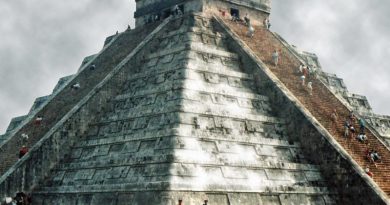Saint Peter’s Basilica
Saint Peter’s Basilica is a church of the Italian High Renaissance and was initially planned in the 15th century by Pope Nicholas V and then Pope Julius II to replace the ageing and old St. Peter’s Basilica, which was built in the fourth century by Roman emperor Constantine the Great.
Construction of the present basilica began In 1506 and was not completed until one hundred and twenty years later in 1626.
Designed principally by Donato Bramante, Michelangelo, and Carlo Maderno, with piazza and fittings by Gian Lorenzo Bernini, St. Peter’s is one of the most renowned works of Italian Renaissance architecture and is the largest church in the world by interior measure.
St. Peter’s is regarded as one of the holiest Catholic shrines. It has been described as “holding a unique position in the Christian world”, and as “the greatest of all churches of Christendom.
Catholic tradition holds that the basilica is the burial site of Saint Peter, chief among Jesus’s apostles and also the first Pope as the Bishop of Rome Saint Peter’s tomb is directly below the high altar of the basilica, also known as the Altar of the Confession.[For this reason, many popes, cardinals and bishops have been interred at St. Peter’s since the Early Christian period.
St. Peter’s is famous as a place of pilgrimage and for its liturgical functions. The pope presides at a number of liturgies throughout the year both within the basilica or the adjoining St. Peter’s Square; these liturgies draw audiences numbering from 15,000 to over 80,000 people.
St. Peter’s has many historical associations, with the early Christian Church, the Papacy, the Protestant Reformation and Catholic Counter-Reformation and numerous artists, especially Michelangelo. As a work of architecture, it is regarded as the greatest building of its age.
The basilica is approached via St. Peter’s Square, a forecourt in two sections, both surrounded by tall colonnades. The façade of the basilica, with a giant order of columns, stretches across the end of the square and is approached by steps on which stand two 5.55-metre (18.2 ft) statues of the first-century apostles to Rome, Saints Peter and Paul.
The interior of the basilica is vast when compared to other churches.
The Vatican obelisk in St. Peter’s Square is the last visible remnant from another agethat of the ancient Roman Empire- it is the Circus of Nero. It was brought from Egyptby Emperor Caligula. The obelisk originally stood at the centre of the spina (median) of the Roman circus.The circus became the site of martyrdom for many Christians after the Great Fire of Rome in AD 64. Tradition states that it was in this circus that Saint Peter was crucified upside-down.In 1586, the obelisk was relocated to its current position by Pope Sixtus V.




